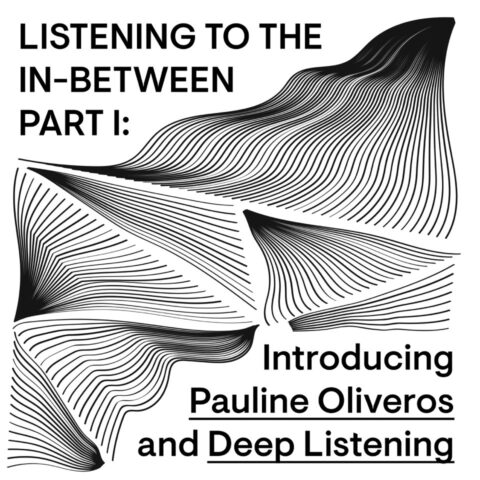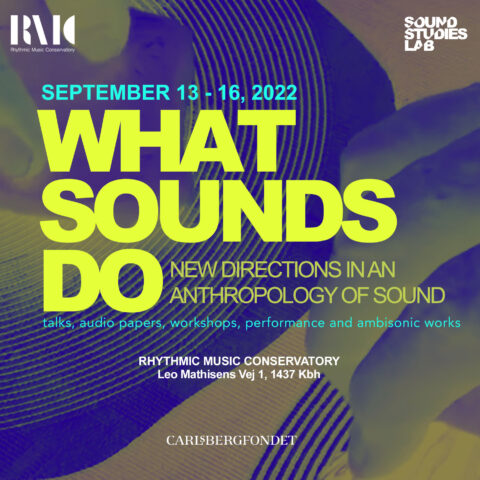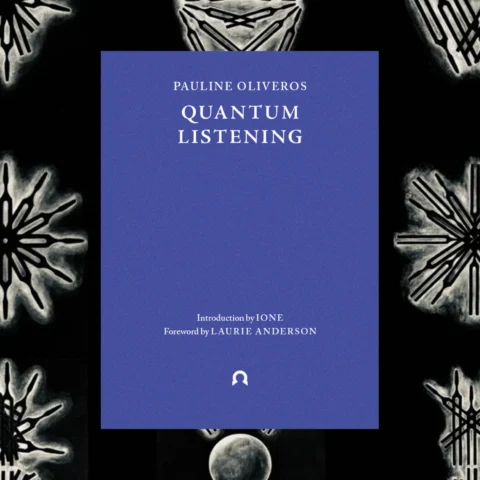
VacuaMoenia is a team dedicated to soundscape exploration and established in Italy by Fabio R. Lattuca and Pietro Bonanno. With the premise of sonically navigating across abandoned places in Sicily, they have been developing a wide variety of interesting practices, including field recording and composition works, text publications, workshops, talks, among others.
Their way of conceiving the soundscape is special and unique, taking roots from different disciplines and perspectives, from aesthetics, music and sound art, to cultural/social activities and research-based explorations towards the implications of the abandoned places. Below is an interview with them, aiming to cover some of those practices and their valuable vision towards sound.
I wonder how the project started and what have you discovered by creating it. Has something changed from the initial idea you had with it?
VM – Our collaboration started during the Live! IXem2011 festival in Favignana, one of the Egadi islands (near Trapani city), organized by Antitesi. Since that time we began a series of recordings in Sicily and often we realized that there was an abandoned architecture that could be re-evaluated and exploited for its features such as “musical instrument”. In particular, we have chosen as the first project, a detailed study on rural villages early in the ‘900 and found that it is possible to draw an imaginary line that cuts Sicily from west to east. This itinerary includes places of great natural interest in which the sounds have not yet been explored. The project idea was unchanged, changing, however, our compositional, technological and study course.
There’s an interesting relationship you do between audio aesthetics and acoustic ecology. How is that link? And how is it present in the way you work?
VM – We think that the two ones are linked together. Although these two studies can be separated and often were, their association produces a friction which created a series of intuitions and insights. The philosophical, anthropological and social aspect of acoustic ecology finds a connection with that technological, analytic and formal aspect of the audio aesthetics. In our case, the link took place when we asked ourself what was the best method to follow in order to best represent our work. Hence, the need to propose the abandoned soundscape not only as a record in itself but also in terms of aesthetics.
The project also shows a big interest on exploring, expanding and even questioning the identity of the urban/rural place. How is that being explored? Also, what have you found in terms of identity, history and the sonic meaning of the place?
VM – Thanks to exploration, we realized that it is not possible to speak of a specific nature of the “borgo” but each one has its own characteristics, in the sense of identity, history and sonic meaning. The abandonment, the only real common element, emphasizes the transition from a condition of living place to a condition of place waiting for a new function. Thus, abandonment and landscape determine a new field of study that is at the border between urban and rural landscape. Through exploration, recording and composition, we tried to define our method for this search.
How important is the aspect of “abandoned places” for you? How that idea came and how special it is in terms of soundscape and meaning?
VM – Our work is based on the abandonment that contrasts but at the same time coexists with the need for reassessment and revival of a cultural and historical forgotten heritage. During the first recording sessions, we felt the need to investigate why some places on the island have been abandoned, proposing a new type of reconsideration. The soundscape, intended as a representative medium, in the case of abandonment, produces a contrast with the visual medium by developing a new form of landscape total exploration.
It’s amazing to listen to several of the pieces you’ve published in the site and found that this “abandonment” or “absence” is really a new way of presence of subtle and intricate sonic phenomena. Several of the pieces are actually full of details and almost silent atmospheres, which also gives an impressive sense of dynamics, distance and morphology. Is that something you have experienced? I wonder how this extension of the field and the “calmed” or “mysterious” mood of the environments affects the perception of the soundscape and the possibilities of its sonic reality?
VM – Yes, we had. Presenting our compositions and/or our installations, we realized how attention – in formal-aesthetic sense – was a decisive parameter. Where to convey sonic attention? Through what parameters? The answer is, actually, in the things you mentioned: dynamic, distance and morphology that flow into the “calm” and “mysterious” mood with which they are often perceived these places. One of the best examples of this is the village Littorio (link). The characteristics that a similar landscape offer, from a point of sonic view, are the almost endless.

Could you tell us about some of your favorite sounds or perhaps some sonic encounters you remember the most?
VM – Our favorite sounds are given by geophonies when they affect the architectural structures. We like to mention the example of Regalmici borgo (link), near Valledolmo, where the wind reverberates the buildings and interior elements.
Do you have any particular interests or aspects to search in a soundscape? Also, what kind of elements you try to look for when deciding the materials to publish online?
VM – Usually we focus on materials each time different offered by the site and how they can interact with each other and with the landscape, even with human intervention, through found-objects techniques. We like to consider every borgo as a great orchestra with which to compose. For online publications, we follow a general design that in turn is reshaped by different “orchestras”.
When recording, what equipment do you use and how do you establish the workflow? Do you always stay in the place? Does this abandonment of the place creates a particular challenge in terms of recording?
VM – We started, as it often happens, with Zoom H2n and H4, but not satisfied with the quality, we chose microphones and recorders more efficient. Currently we use a Telinga dish ProDat Stereo Mic, an At4071a shotgun, contact microphones and hydrophones, a Tascam DR-680 and a Tascam DR-60D recorders. We prefer the directional shooting that permits a greater versatility in the use of the collected materials not forced at all from the sonic environment. We do not have a fixed pattern but we try through our equipment to record the details and the distinctive elements of the places.
As said before, visual and sonic landscape do not always match. This leads us to make a compromise in order to create a connection between exploration of the place and the final hearing.
How much do you interact with the environment? For example, in order to reflect some acoustic proprieties or the space-time dimension present in a particular place…
VM – We interact with the environment through two practices. The first, the passive one, is to record, in a point that we consider strategic, the features of the landscape through the position of a microphone exposed for a time determined by us. The second, the active one, is, the above-mentioned technique of found objects, which allows us to record the place through materials by ourselves “played.” The first technique is particularly focused on the background, where the second, instead, serves to that exploration of figure that permits to emphasize the particularities.

I know you did a workshop recently… How was it? Could you tell us about the process, results and ideas behind it?
VM – Thanks to the support of the Poggioreale town and Ass. Cult. Poggioreale Antica, we were able to bring our experience and techniques with the workshop applicants. For us it was also an acknowledgment of how these techniques and these places can be perceived by those who approach the topic. The materials collected during this experience will be published in the form of releases on our bandcamp page.
I wonder if you have some kind of ways of engaging workshop participants in order to activate their ears or listen in different ways…
VM – The headphone listening is always done at a later time. The first phase involves the physical exploration of the place without equipment and in silence. In this way, the ear begins to get used to the landscape. A second phase is about active listening and involves attention to the sounds across distances and different dynamics – for example, we focus on the sounds more distant and weaker ones. This point is important to set a useful range during recording, which also produces an interesting result of ears cleaning. Next, they can use the microphone to capture the interesting elements of the landscape according to their subjective parameters. During the sessions, the participant is free to create their own personal “library”. The work in the studio, on the other hand, lets users create a soundscape composition that witnesses their cognitive perception. Here we focus on the techniques of editing and mounting in our case concern the continuous and constant attention to original sources and their coherence with the final material.
In one of the papers you have on the site, you talk about your interest on the “harmony between the listener and the heard”, also trying to explore listening as a verb, not an object not a subject. Could you expand us about that notion of listening specially as the way you approach it in the project?
VM – Unlike English, Italian language makes it possible to give a definite connotation to the word “listen” as a noun (Ascolto) and as a verb (Ascoltare). Our idea is to switch from listening to something to listening in general where the listener shares the same space of what is heard. The interaction with the places we record is also based on these ideas.
What would be the role, concept or “presence” of silence in your explorations?
VM – As often demonstrated, we think J.Cage experiments, the silence can not exist but there is, however, an inner silence as a necessary condition to be able to “listen”. A correspondence can exist in a high-fidelity landscape, characterized by a change and complexity of sounds that our mind considers as enrichment. In a condition of flattening of evolutions and dynamics of the sound (as happens in our cities) the purpose of vacuamoenia may be to return to this condition of ‘Silence’.

Finally, I wonder how this project and exploration has affected your life. How has it influenced the way you listen and experience the world?
VM – The project has allowed us to discover a cultural and landscape heritage that until a few years ago we did not know. The meeting and sharing with the people we met during this experience has enriched our luggage and encourages us to continue in a more careful and through research in its various aspects and facets. Finally, the above techniques we talked, we allow a more careful and aware to one of the aspects which most influences the perception of what surrounds us daily.





